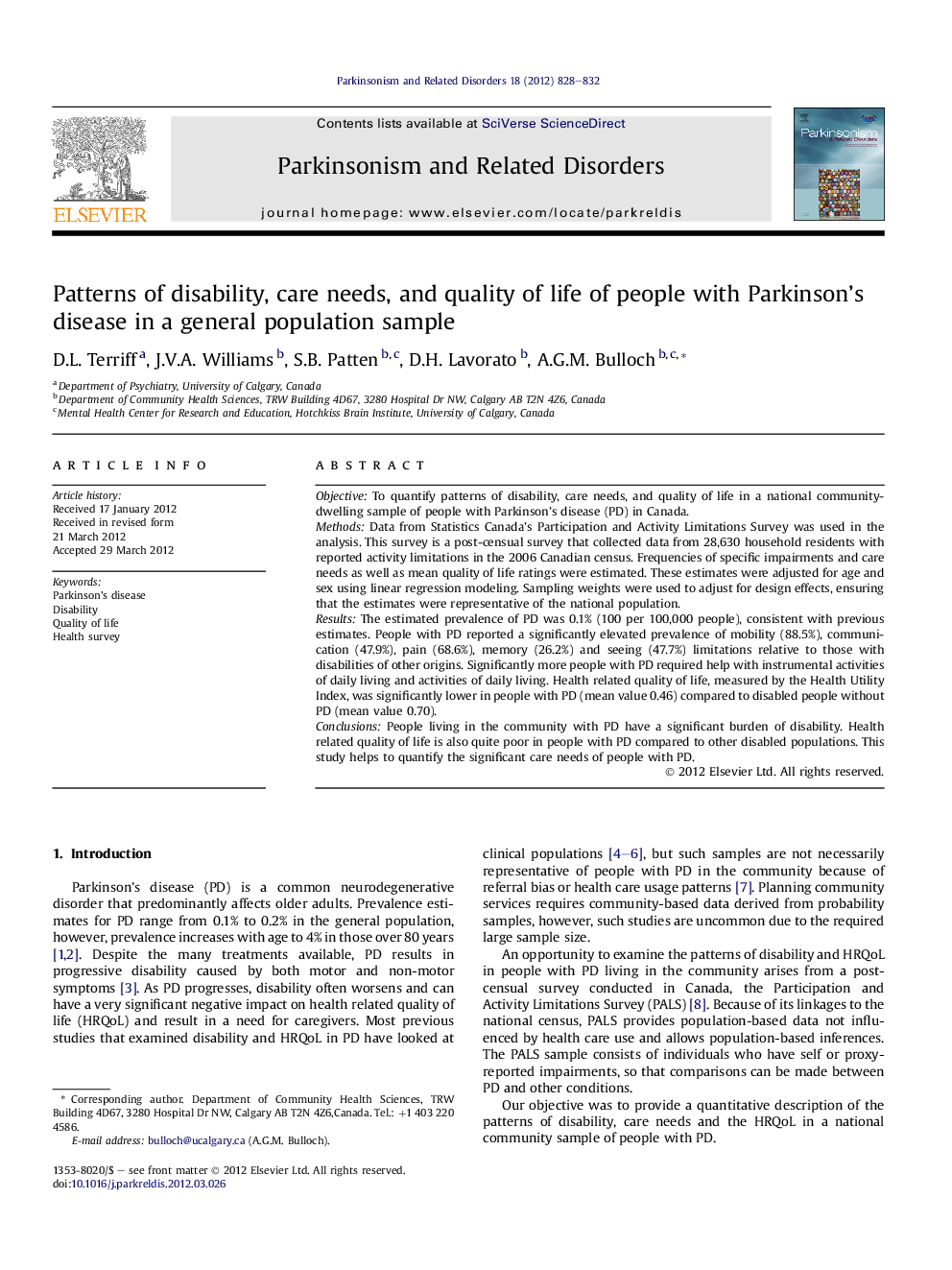| Article ID | Journal | Published Year | Pages | File Type |
|---|---|---|---|---|
| 1920631 | Parkinsonism & Related Disorders | 2012 | 5 Pages |
ObjectiveTo quantify patterns of disability, care needs, and quality of life in a national community-dwelling sample of people with Parkinson’s disease (PD) in Canada.MethodsData from Statistics Canada’s Participation and Activity Limitations Survey was used in the analysis. This survey is a post-censual survey that collected data from 28,630 household residents with reported activity limitations in the 2006 Canadian census. Frequencies of specific impairments and care needs as well as mean quality of life ratings were estimated. These estimates were adjusted for age and sex using linear regression modeling. Sampling weights were used to adjust for design effects, ensuring that the estimates were representative of the national population.ResultsThe estimated prevalence of PD was 0.1% (100 per 100,000 people), consistent with previous estimates. People with PD reported a significantly elevated prevalence of mobility (88.5%), communication (47.9%), pain (68.6%), memory (26.2%) and seeing (47.7%) limitations relative to those with disabilities of other origins. Significantly more people with PD required help with instrumental activities of daily living and activities of daily living. Health related quality of life, measured by the Health Utility Index, was significantly lower in people with PD (mean value 0.46) compared to disabled people without PD (mean value 0.70).ConclusionsPeople living in the community with PD have a significant burden of disability. Health related quality of life is also quite poor in people with PD compared to other disabled populations. This study helps to quantify the significant care needs of people with PD.
